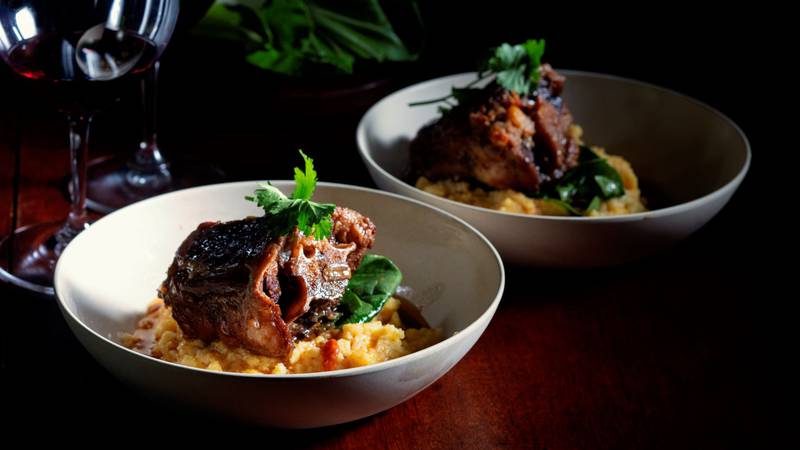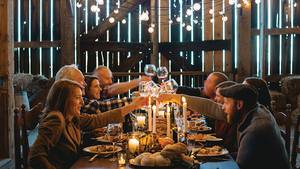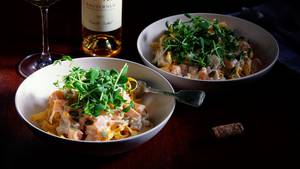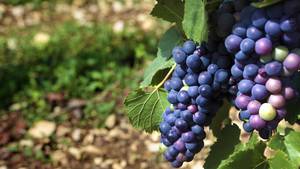The first time I understood fine wine was by drinking a bottle of 1997 Vieux Château Certan Pomerol. It was only seven years old by the time it got to me, but it was stunningly good, and I was transported. My recently kindled wine odyssey took on a new urgency as I pushed the boat out, determined to repeat that exhilarating experience again. Alas, as the tippled ones say, "there are no great wines; only great bottles,” and that search can turn as frustrating as it can delightful.
The journey from grape to glass can be a long one, indeed. When the grapes come out of the blocks, they're almost uniform, in a line, but then very quickly begin to differentiate and separate themselves in the vineyard, in the tank, and then in many cases, in the barrel. The longer they go, the more distinct that wine that came from the same origin will appear to us. In the end, the loneliness of the long-distance bottle will see all that difference amplified. In 20-years time, we can blind taste 10 bottles of the same wine and the same vintage (and often from the same cellar) and believe them to be 10 wines from 10 different places, grapes, and vintage.
From Bourg to Blaye, to St-Émilion and its many satellites; from Fronsac and Canon-Fronsac to Pomerol and Lalande-de-Pomerol and to the Francs- and the Castillon-Côtes de Bordeaux and to Graves de Vayres and Ste-Foy-Bordeaux across the Dordogne, Right Bank Bordeaux is distinguished by several different terroirs but only by one ever-present grape variety: Merlot.
The plummy density of Merlot and the easy way it’s turned into wine the world over has washed out its reputation with many drinkers. Many fans of the grape know, however, that Merlot can reach sublime heights in a familiar three-act play in Bordeaux. Particularly, and especially, in the Right Bank where it takes centre stage, supported by either Cabernet Franc or Cabernet Sauvignon; frequently both and seldomly by the other Bordeaux bit players of Malbec and Petit Verdot. There are now 6 newly approved grape varieties in Bordeaux as a response to climate change but their impact on the region remains to be seen. For now, their approval is limited to the Bordeaux & Bordeaux Supérieur appellations, and the Right Bank still means Merlot for the foreseeable future.
When sommeliers think of what to pair Right Bank Bordeaux with, the classic Entrecôte à la Bordelaise is the first thing that comes to mind. Entrecôte is traditionally prepared by using bone marrow in the rich and velvety red wine and shallot sauce and that technique is mirrored here in this hearty oxtail stew.
As the weather turns cold here in Ontario, our multi-cultural kitchens reach for the comforts of home. Just as different cultures mix and exchange in the kitchens of the GTA, this dish of Braised Oxtail from my Cape Malay community of South Africa is a wonderful example of a hybrid cuisine; the Indian current of spice merging with the Atlantic Britishisms of Worcestershire and mustard and whole stewed veg all done with the slow cooking of a Dutch oven.
How does a Right Bank Bordeaux play with this dish?
The weight of the dish, with its rich sauce from the bone and stewed vegetables matches the medium-full alcohol weight and richness of the red wine but is also contrasted by the coolness and refreshing acidity of a Right Bank red served at the proper temperature of 16C, setting the stage for a dynamic interplay between the two.
The acidity of the tomato, mustard, and Worcester (easily replaced in the recipe with red wine) is supported by the natural acidity of the wine, allowing the flavours to step through the rich velvet curtains of the sauce. At the same time, the ripe plummy fruit of the wine finds a friendly echo in the sweetness of carrot and the touch of apricot chutney, while the fine-grained tannins of the wine give a lush texture which stitches seamlessly together with the silky sauce.
The balanced alcohol of the wine has enough power to carry the flavours through to the back of the room but not so much that it becomes shrill and overpowers the orchestra.
A little bottle age and time spent in oak will further tie the knot tighter with the added umami of the Worcester, tomato and the Maillard compounds of the browned meat.
The complexity of the spices in the dish contrasts with the aromatic complexity of the wine. Bordeaux benefits from being a blend of grape varieties but also offers key lactones from oak-ageing that are echoed specifically in the clove accent of this dish. This complexity is fundamentally one of contrasts and not matching because each spice and aroma stand out like its own colour in a larger, composed whole.
Right Bank Bordeaux is no longer restricted to a minimalist stage but is on its own journey, finding friends in the kitchens of the world!
South African Braised Oxtail
2kg Oxtail
2 tsp salt
6 tablespoons of oil
2 large (3 medium) onions, diced
1 large carrot, diced
2 cloves
1 tbsp cumin seed
1 tbsp coriander seed
8 garlic cloves, minced
1 tbsp paprika
1/2 tsp nutmeg
1 tbsp dried thyme (or 4 sprigs fresh)
2 fresh green chillies (depending upon desired heat), de-seeded and chopped fine
2 medium tomatoes, diced
Salt & pepper, to taste
6 medium potatoes, peeled, quartered
6 medium carrots, peeled, chopped into 2” pieces
1 bay leaf
2 tbsp Worcerstershire sauce
1 tbsp Dijon or other grainy mustard
1 tbsp apricot chutney (Mrs. Ball’s)
Hot water if necessary
Fresh coriander leaves
Directions: Season the oxtail pieces with salt and pepper. In a heavy-bottomed (cast iron) pot, heat oil over medium-high heat and brown the oxtail on all sides; remove from the pot and set aside. Turn the heat to medium and toast clove, cumin, and coriander seed briefly, then add the onion and carrot, allowing them to sweat. Next, add garlic and stir shortly until fragrant, following with dried/powdered spices and the chopped chillies if desired, and fry until the aroma fills your kitchen. Add water if too dry. Add diced tomato and sautée until colour deepens. Then add the potatoes and carrots, sautéeing shortly. Next, add the bay leaf, Worcester, mustard, and chutney and stir to combine. Salt and pepper to taste. Add the oxtail and any juices back in. Top with enough water as necessary to not quite cover the oxtail. Bring to a gentle boil, then cover and turn down low and let braise for 3-4 hours or until the meat is fork-tender, stirring occasionally, and adding more hot water as needed to keep levels up. The sauce should be velvety, so remove the lid and reduce if too thin. Remove thyme stalks, bay leaves, and cloves. Garnish with fresh coriander and serve over polenta or mash with a braised veg like spinach or baby bok choy on the side.







